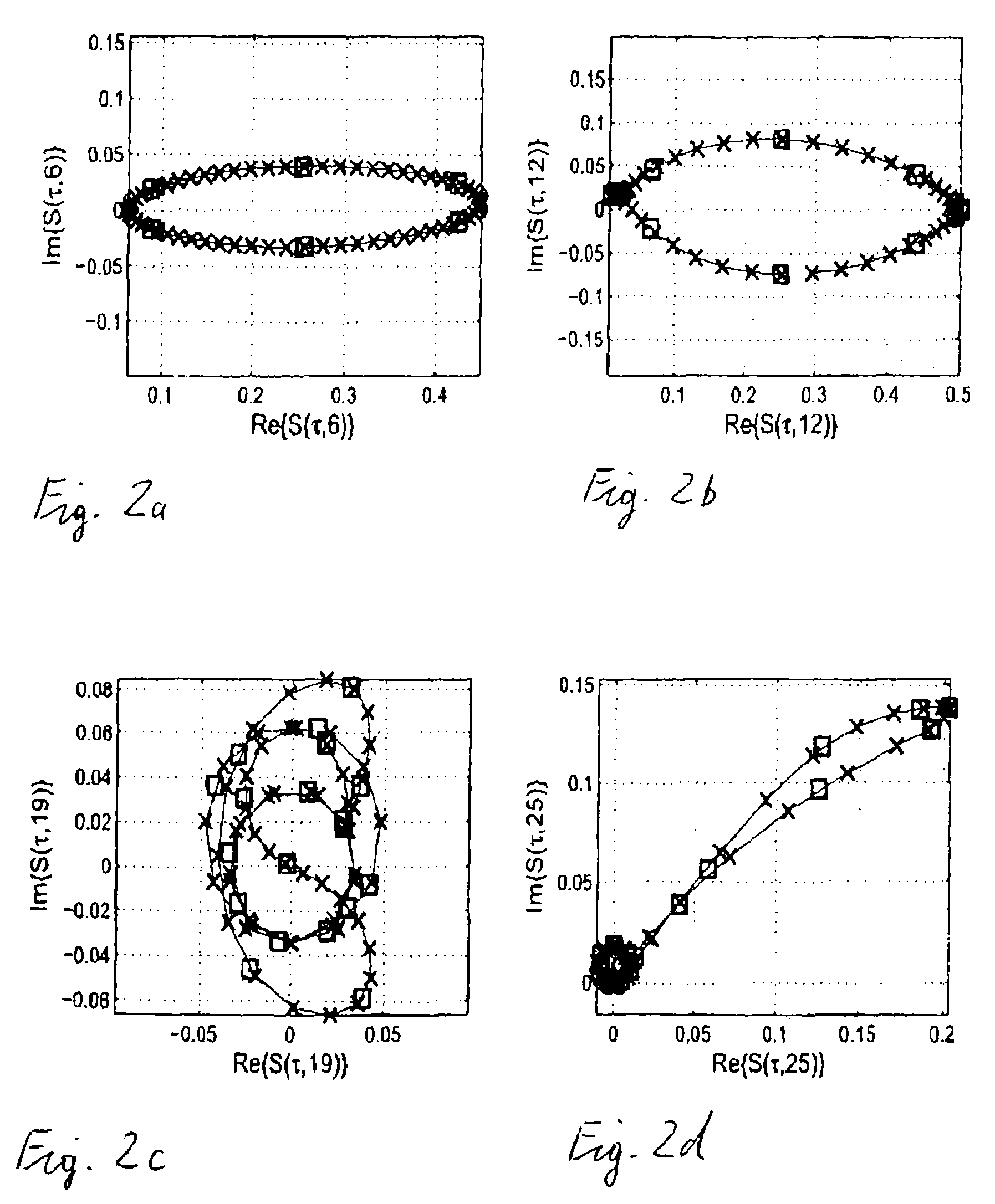Method and system for signal processing using a sparse approximation of the S-transform
a signal processing and approximation technology, applied in the field of signal processing, can solve the problems of all tfrs, hampering or even blocking the application of present signal processing methods and systems, and insufficient analysis information,
- Summary
- Abstract
- Description
- Claims
- Application Information
AI Technical Summary
Benefits of technology
Problems solved by technology
Method used
Image
Examples
Embodiment Construction
[0053]A discrete expression of the S-transform is given as:
[0054]S(τ,f)=∑t=0M-1h(t){f2πMexp(-f2(τ-t)22M2)}exp(-2πⅈftM).(1)
In equation (1), h(t) is a time series signal, M is the number of points in h, and t and ƒ are integer time and frequency indices, respectively. Therefore, if T is a sampling interval, tT gives time in seconds and ƒ / MT gives frequency in Hz. The time-frequency resolution of the S-transform is provided by a scalable Gaussian window—the term in braces in equation (1) and subsequent equations—whose width varies inversely with |ƒ|, ensuring that the same number of cycles of the Fourier sinusoid are retained at each frequency. The width scaling of the S-transform window is reminiscent of wavelets and, like continuous wavelet transforms, the modulus |S(τ,ƒ)|—also called the S-spectrum—has better frequency resolution at low frequencies, and better time resolution at higher frequencies.
[0055]Since the S-transform window contains both ƒ and t, it is not po...
PUM
 Login to View More
Login to View More Abstract
Description
Claims
Application Information
 Login to View More
Login to View More - R&D
- Intellectual Property
- Life Sciences
- Materials
- Tech Scout
- Unparalleled Data Quality
- Higher Quality Content
- 60% Fewer Hallucinations
Browse by: Latest US Patents, China's latest patents, Technical Efficacy Thesaurus, Application Domain, Technology Topic, Popular Technical Reports.
© 2025 PatSnap. All rights reserved.Legal|Privacy policy|Modern Slavery Act Transparency Statement|Sitemap|About US| Contact US: help@patsnap.com



